Bukranion
View All Tags
In ancient Greece and Rome, the ox was often associated with sacrifice, particularly in religious rituals dedicated to the gods. Oxen were considered valuable animals, used for plowing fields, transport, and sacrifice. The bukranion symbolized the sacrificial process, where an ox might be ritually slaughtered to appease gods, especially in ceremonies dedicated to deities like Zeus, Apollo, or Demeter. The bull’s head or ox head became a visual shorthand for the agricultural fertility and prosperity brought about through such sacrifices. The garlands or vines typically adorning the bukranion suggested the connection between sacrifice and the growth of crops, linking the death of the animal to the rebirth and renewal of the land.
In architecture, the bukranion was often used as a decorative motif, particularly in temples and public buildings. Its presence on the friezes and entablatures of these structures reflected both the ritual importance of animal sacrifice and the desire to evoke the fertility and prosperity granted by the gods. The symbol also acted as a reminder of the relationship between the earthly and the divine, with oxen serving as intermediaries between mortals and gods in the sacrificial process. The garlands or vines hanging from the ox head also evoked a sense of abundance and agricultural wealth, reinforcing the agricultural foundations of ancient societies.
The bukranion’s symbolism extended beyond just religious contexts; it was also a broader representation of the agrarian economy. In ancient Greece, the image of the ox and its sacrifice conveyed the essential role that animals played in sustaining both human life and the natural cycles of the world. In Roman coinage, the bukranion appeared as a symbol of the empire’s connection to agriculture and the divine protection of the state’s prosperity. The symbol might be used to evoke both the fertility of the land and the paternal authority of the emperor, who was seen as a protector of the agricultural and economic stability of the empire.
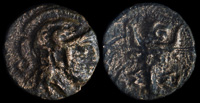
Assos, Troas 350-300 BCE
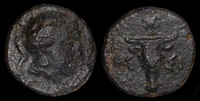
Assos, Troas 400-241 BCE
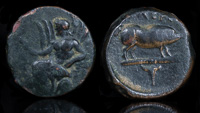
Eleusis 350-300 BCE
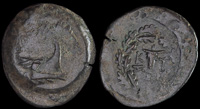
Kyzikos 300-200 BCE

Parion, Mysia 350-300 BCE
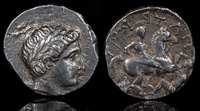
Patraos 335-315 BCE
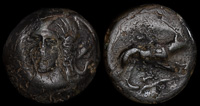
Phaloria, Thessaly 302-286 BCE
